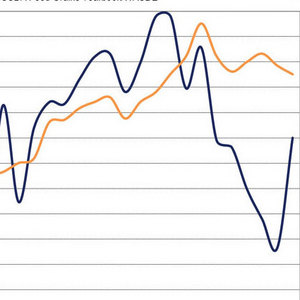More comfortable corn carryout-to-use ratio projected

FCStone
January 25, 2014
BY Jason Sagebiel, FCStone
The following corn market analysis was written for Ethanol Producer Magazine in late December. Author's commentary reflects prices and market conditions at that time.
The grains complex has been tiresome compared to the whirlwind proteins of late. A big carryout looms in corn, and demand from China has been in question. Nonetheless, the lack of cash movement led to historically strong harvest basis when considering production nears 14.0 billion bushels and a carryout of 1.792 billion bushels.
The December USDA report increased corn for exports and ethanol production by 50 million bushels each. Corn for exports is projected at 1.450 billion bushels compared to 731 million a year ago. Ethanol demand is projected at 4.950 billion bushels as compared to 4.648 billion a year ago. Feed demand is still expected at 5.20 billion bushels, up 867 million from a year ago. Therefore, feed and ethanol coproduct demand is expected to increase, all the while animal grain consuming units are not increasing at the same rate. Thus domestic meat production should increase and/or more coproduct should be exported through the remainder of the marketing year. The end corn carryout-to-use ratio should be 13.7 percent versus 7.4 percent a year ago. The accompanying chart illustrates that with high-dollar corn, the market was able to find other feedstuffs, but is the number this year too high, too fast? Any demand reduction will see carryout increase, weighing heavily on the market.
Advertisement
Advertisement
World corn carryout rests comfortably at 196.62 million metric tons (mmt). This compares to 164.41 mmt and 165.19 mmt the last two years, respectively. Demand will be influenced by China’s handling of genetically modified corn and corn products and South America production, which had favorable December weather.
Advertisement
Advertisement
Related Stories
The U.S. EPA on July 8 hosted virtual public hearing to gather input on the agency’s recently released proposed rule to set 2026 and 2027 RFS RVOs. Members of the biofuel industry were among those to offer testimony during the event.
The U.S. exported 31,160.5 metric tons of biodiesel and biodiesel blends of B30 and greater in May, according to data released by the USDA Foreign Agricultural Service on July 3. Biodiesel imports were 2,226.2 metric tons for the month.
The USDA’s Risk Management Agency is implementing multiple changes to the Camelina pilot insurance program for the 2026 and succeeding crop years. The changes will expand coverage options and provide greater flexibility for producers.
EcoCeres Inc. has signed a multi-year agreement to supply British Airways with sustainable aviation fuel (SAF). The fuel will be produced from 100% waste-based biomass feedstock, such as used cooking oil (UCO).
CARB on June 27 announced amendments to the state’s LCFS regulations will take effect beginning on July 1. The amended regulations were approved by the agency in November 2024, but implementation was delayed due to regulatory clarity issues.
Upcoming Events










